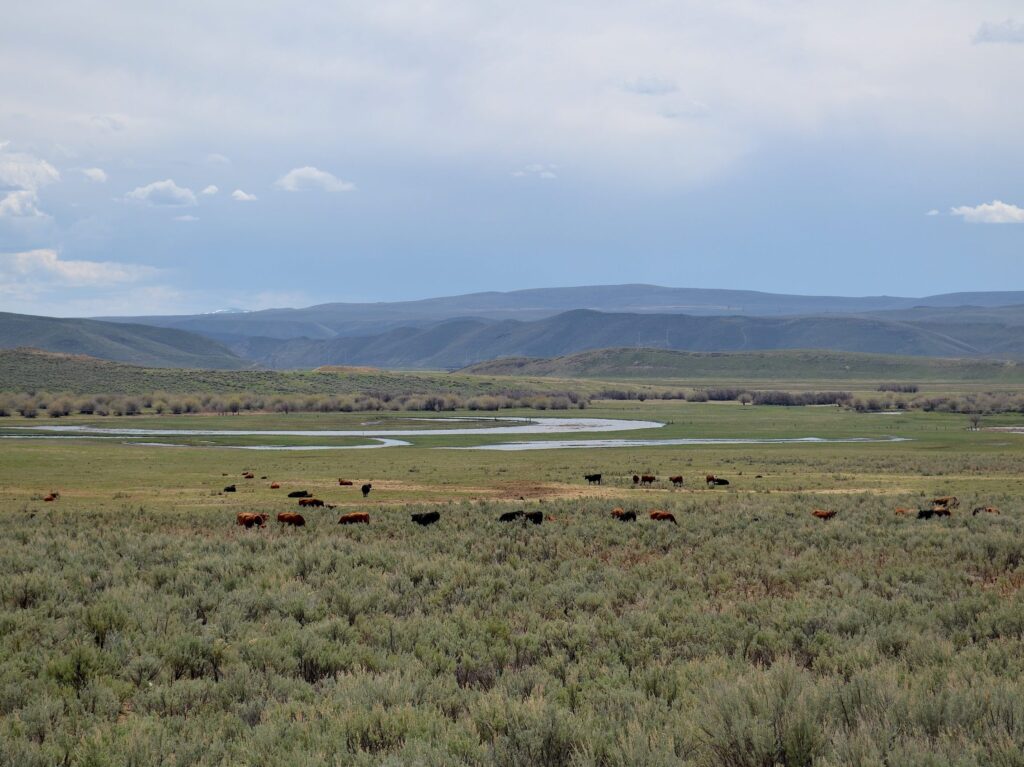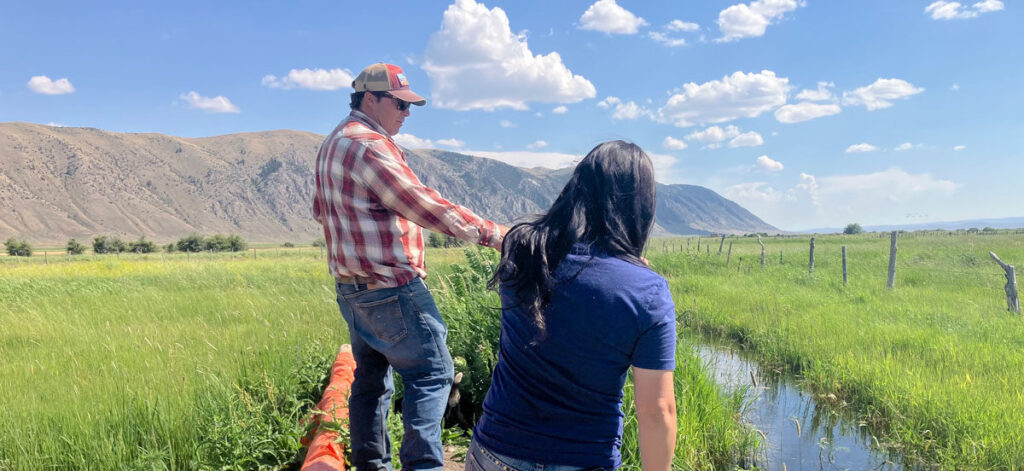Scroll to view the storymap or see it full size here.
Sharing the Story of the Bear
Connecting journalists to people and place in the Bear River Watershed.
Emily Downing
October 28, 2022
The Bear River begins its journey in Utah’s high Uinta Mountains before flowing into the sagebrush sea of southwestern Wyoming, where it creates lush wet meadows and productive bottomlands for wildlife, livestock, and people alike. As the creek becomes more of a river, it curves back and forth across the Wyoming-Idaho line. The river then marks the northern extent of the Bear River Range of the Wasatch Mountains before it turns south, flowing through the productive agricultural valleys of southeast Idaho and northern Utah. As it empties into the Great Salt Lake, the river creates rich mudflats and wetlands—ideal habitat for migratory waterbirds and waterfowl. In running its course, the Bear River crosses fence lines and state lines, alpine meadows, and irrigated fields: myriad landscapes managed in many different ways.
The Bear River Watershed has been a priority landscape for the Intermountain West Joint Venture (IWJV) since the inception of the Water 4 program in 2019. As the largest tributary to the Great Salt Lake, the Bear River’s health is just as important for the population centers of the Wasatch Front as it is for those who live along its banks throughout Utah, Idaho, and Wyoming. Because of how it crosses multiple state lines, the Bear River epitomizes the importance of cross-boundary coordination and systems-scale thinking as land managers and policymakers enact decisions that affect the entire watershed.
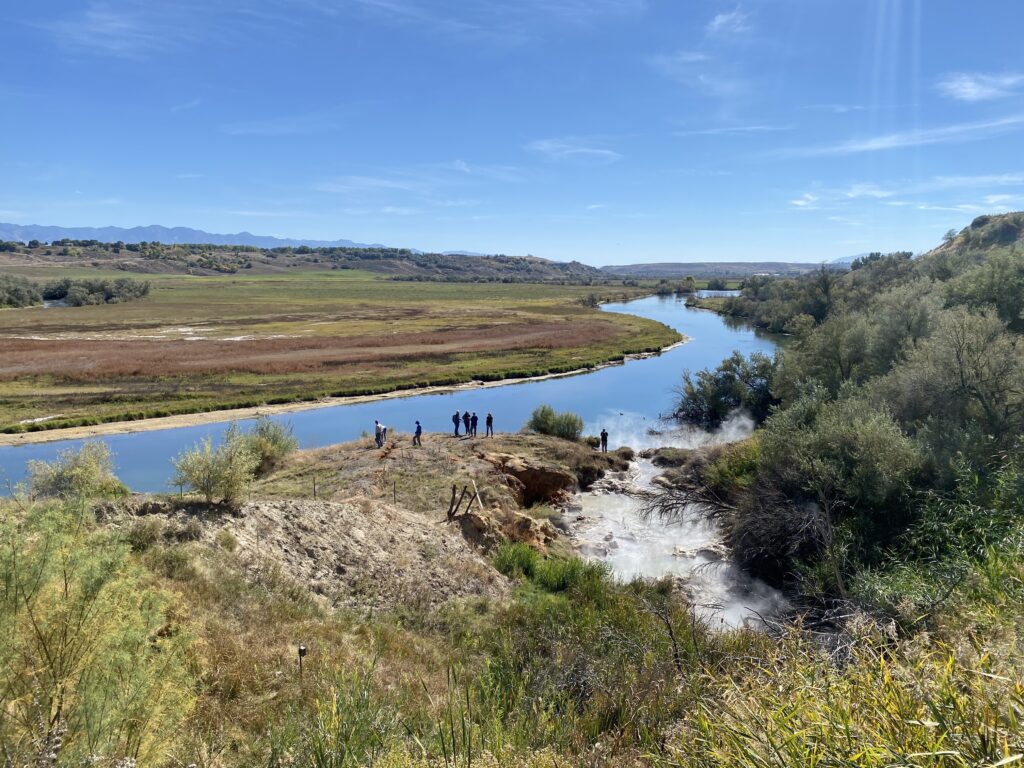
In the summer of 2022, the drying of the Great Salt Lake and its potential consequences made national headlines. Attention quickly turned to water use along the tributaries that feed the lake, with fingers pointing in every which way. This discussion set the stage for the IWJV’s Journalist Workshop exploring the Bear River Watershed. Called Threaded Landscapes: A workshop for those seeking connection across divides for the future of water, agriculture, wildlife, and conservation, the workshop was designed to connect journalists to the people at the heart of the challenging issues facing this watershed.
The four-day, bottom-to-top-to-bottom tour of the watershed took place in early October 2022. Participants began their journey at Antelope Island State Park, where first impressions of the low lake levels set the tone for the trip.
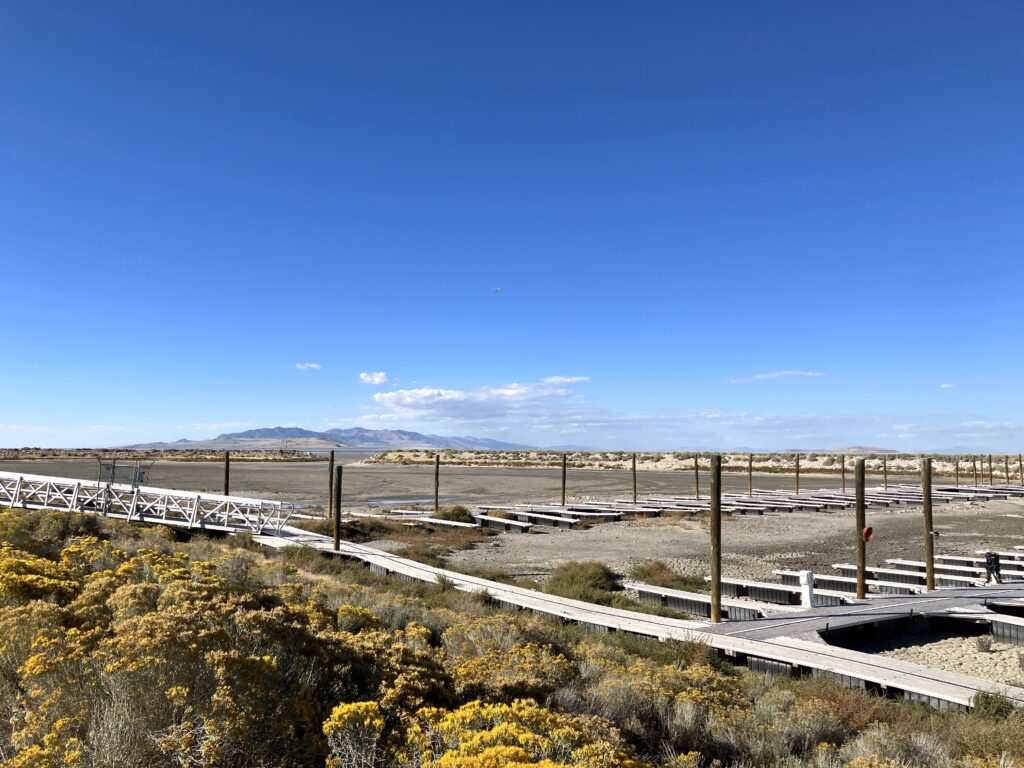
John Luft, the Great Salt Lake Ecosystem Program Manager for Utah’s Division of Wildlife Resources, Joel Ferry, the Director of Utah’s Department of Resources, and Casey Snider, the Water Outreach Specialist for Ducks Unlimited and a Utah State Representative, spoke to the threats posed by low lake levels. These run the gamut from toxic dust storms to the collapse of the brine shrimp industry to decreased Wasatch snowpack to severe depreciation of Pacific Flyway waterfowl that depend on the lake. They also spoke of solutions in the works, both through the Utah State Legislature and local initiatives.
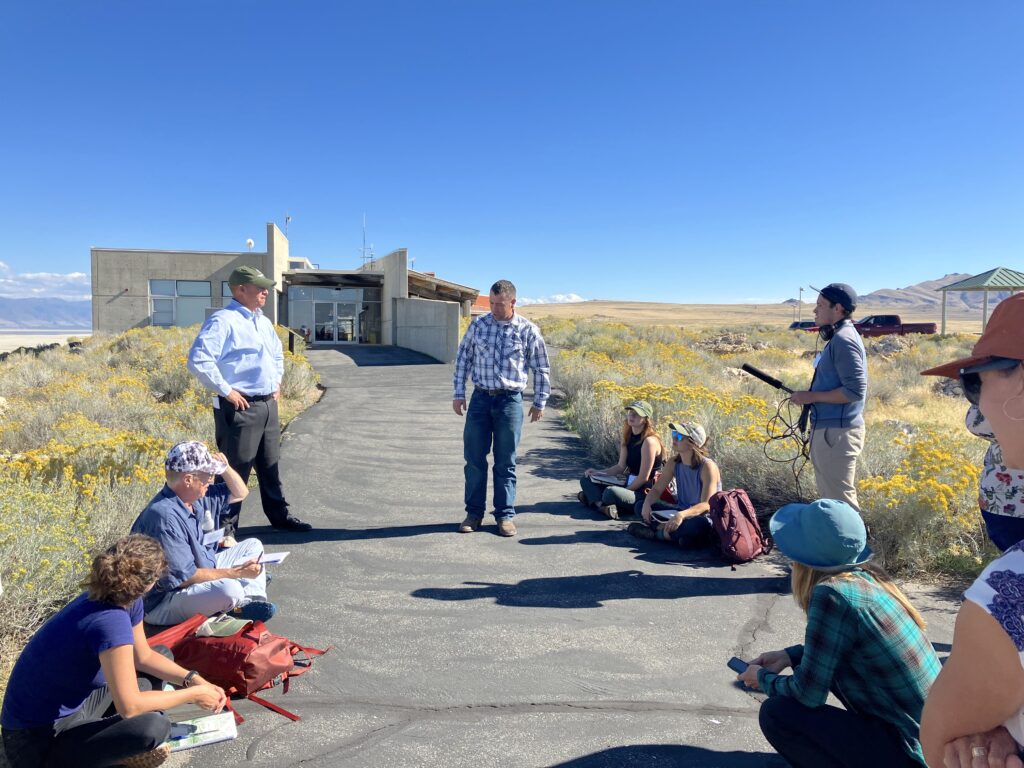
Day two of the workshop brought the journalists to the U.S. Fish and Wildlife Service (USFWS)-run Bear River Migratory Bird Refuge at the head of the lake, where Refuge Project Leader Erin Holmes led a morning classroom session on the management of the refuge and the challenges presented by drought.
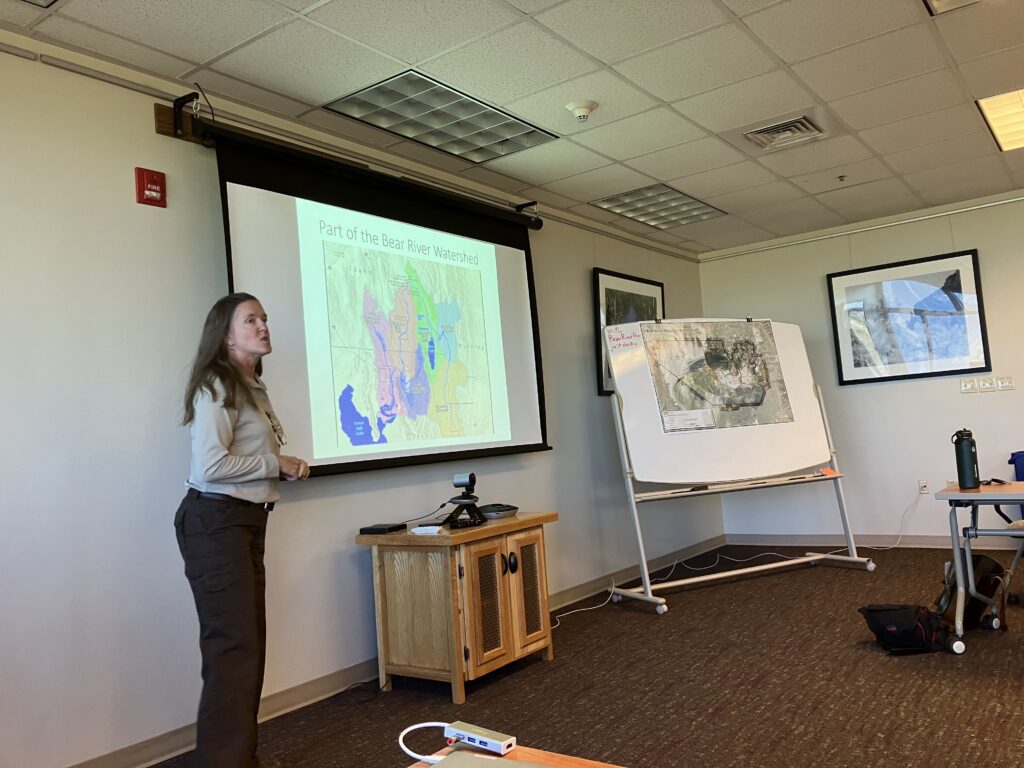
IWJV Science to Implementation Specialist Erica Hansen and Mark Petrie, the Director of Conservation Planning for Ducks Unlimited, rounded out the classroom session by respectively discussing IWJV and DU science that indicates the importance of the Great Salt Lake and the Bear River Watershed.
Participants got to stretch their legs at the beginning of the Refuge’s Auto Tour Route as they settled into a discussion with the afternoon’s slate of speakers: Refuge staff Mike Dunphy, Shoshone-Bannock Tribes Research Ecologist Sammy Matsaw, and Matt Lucia, the Executive Director of Idaho’s Sagebrush Steppe Land Trust.
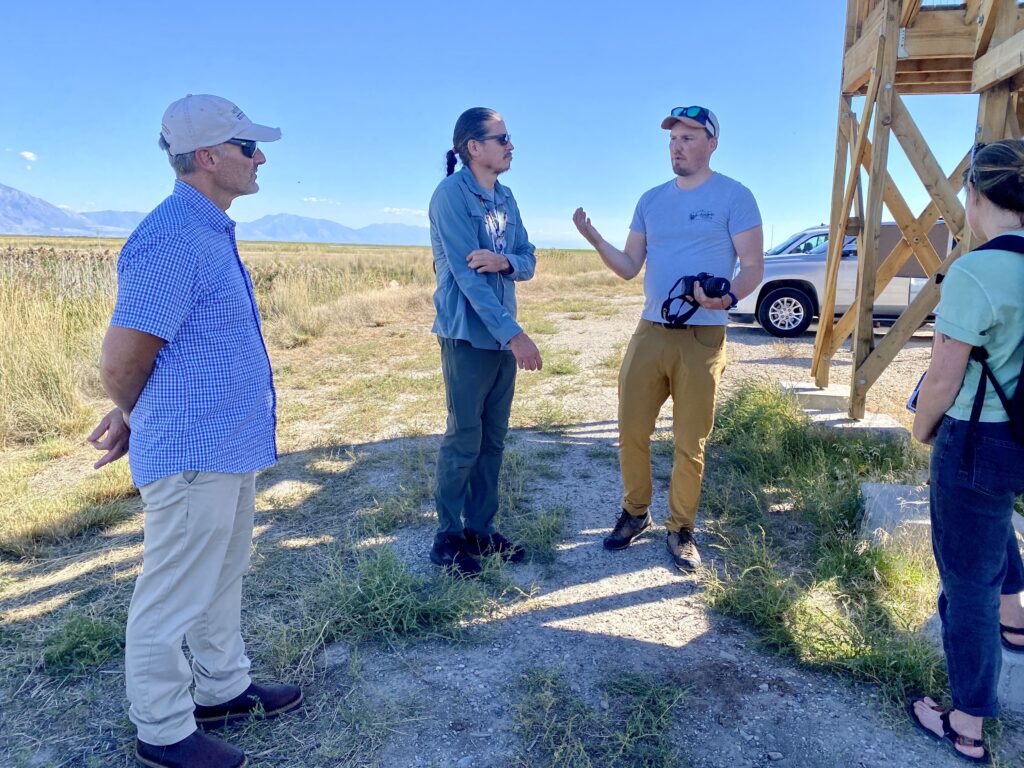
The journalists then hopped to the next state over (Wyoming) for day three of the workshop. Watching cows and a moose traverse through the fall colors lining the Bear River, they listened to Adrian Hunolt talk about his ranching operation near the headwaters of the river south of Evanston. Dave Kimble, the local biologist for the U.S. Fish and Wildlife Service’s Partners Program, joined the group to share private lands stream restoration projects on the Bear River.
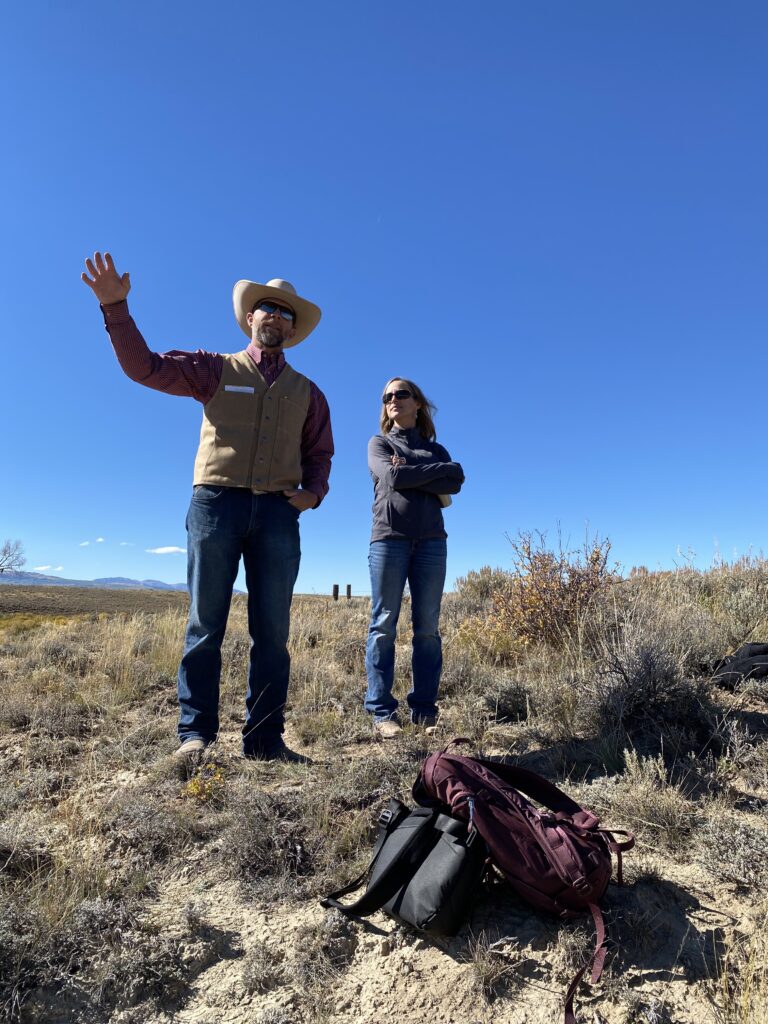
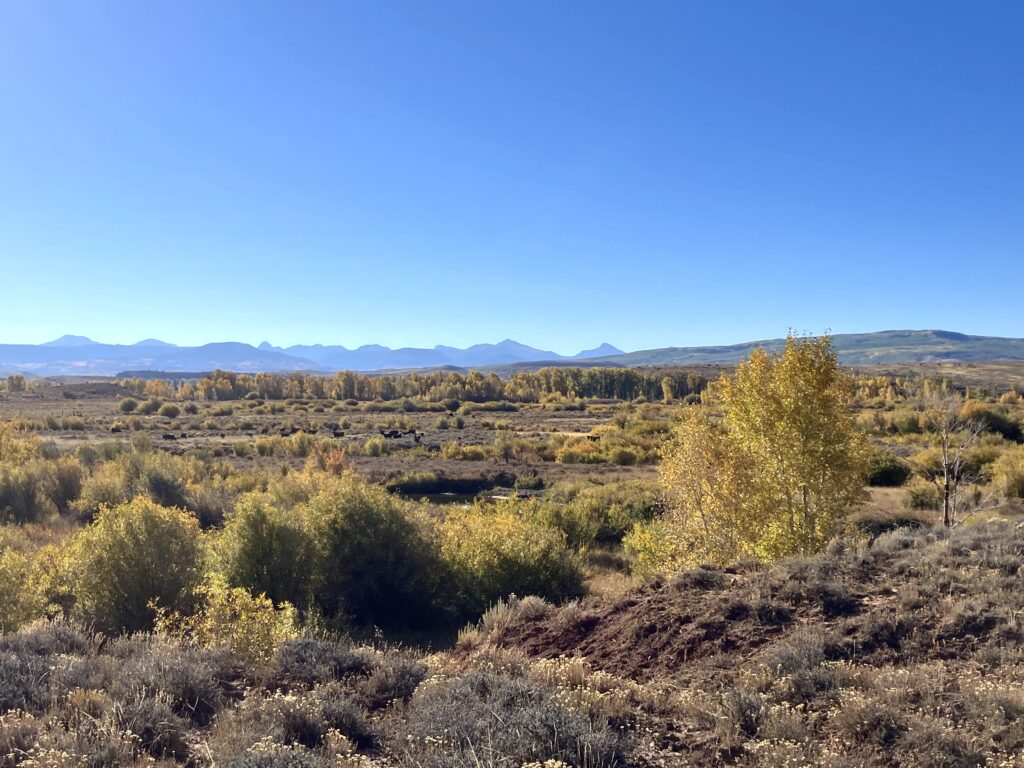
Left: Adrian and his wife Jaime spoke to Wyoming’s unique system of water rights as well as the importance of flood irrigation and the difficulties of ranching in a high-elevation system. Right: The Bear River winds its way through cottonwoods and willows on the Hunolt Ranch (Wyoming) with the Uinta Mountains (Utah) in the background.
The Hunolt’s neighbor Ted Jacobsen then hosted the group for lunch at the neighboring Kingfisher Ranch, which is managed for conservation and recreation values.
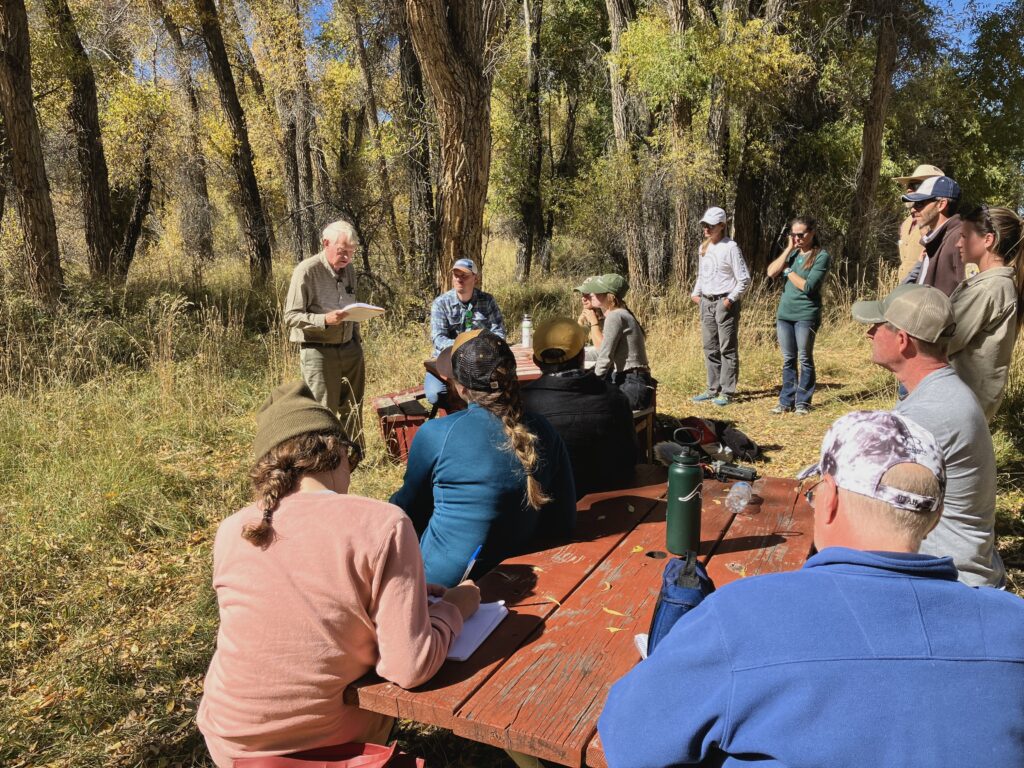
Following the river’s course to the town of Cokeville, Wyoming, the group met with Angi Bruce, the Deputy Director of Wyoming Game and Fish, and Erica Husse, the Bureau of Land Management Coordinator for Wyoming Landscape Conservation Initiative. They discussed managing land for multiple uses including conservation. Then, the group made their way into Idaho for the evening.
The last leg of their journey took the journalists into the heart of the Bear River Watershed. They caught up with Jaime Campbell, the Conservation Manager for the Sagebrush Steppe Land Trust to discuss the importance of conservation easements in a rapidly developing landscape. Then, the group finished its tour at Wuda Ogwa (formerly known as Boa Ogoi), or the Bear River Massacre Site. They met with Rios Pacheco, the historian for the Northwestern Band of the Shoshone Nation, as well as Maria Moncur, the Public Relations Coordinator for the tribe, contract engineer Brian Andrew, and contract biologist Darren Olsen to discuss the tribe’s work to establish a conservation easement and build a visitor’s center on the site.
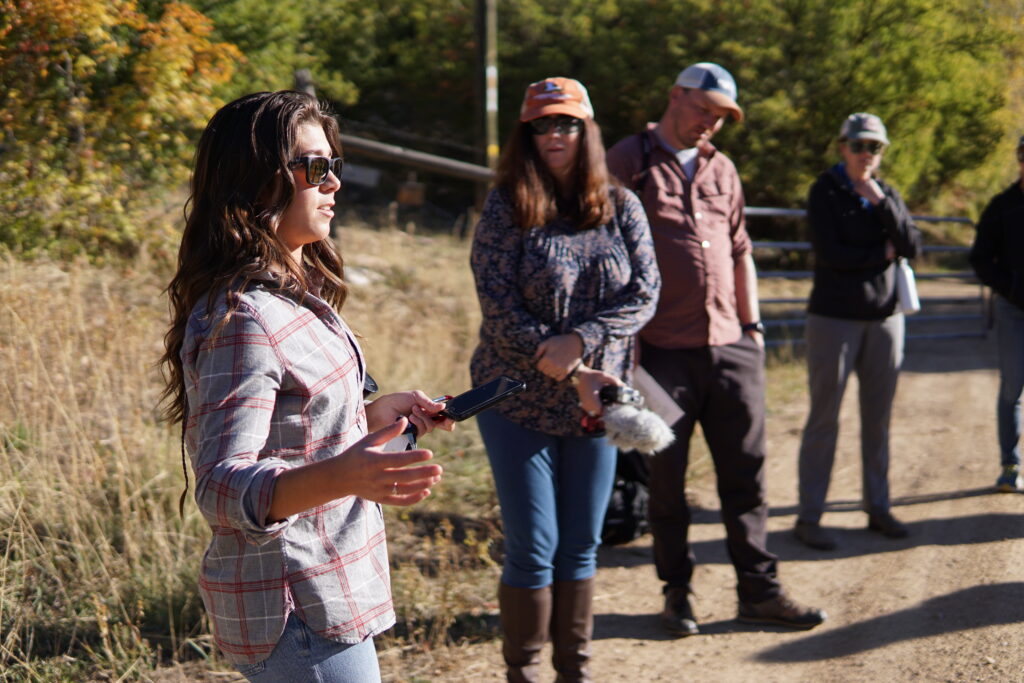
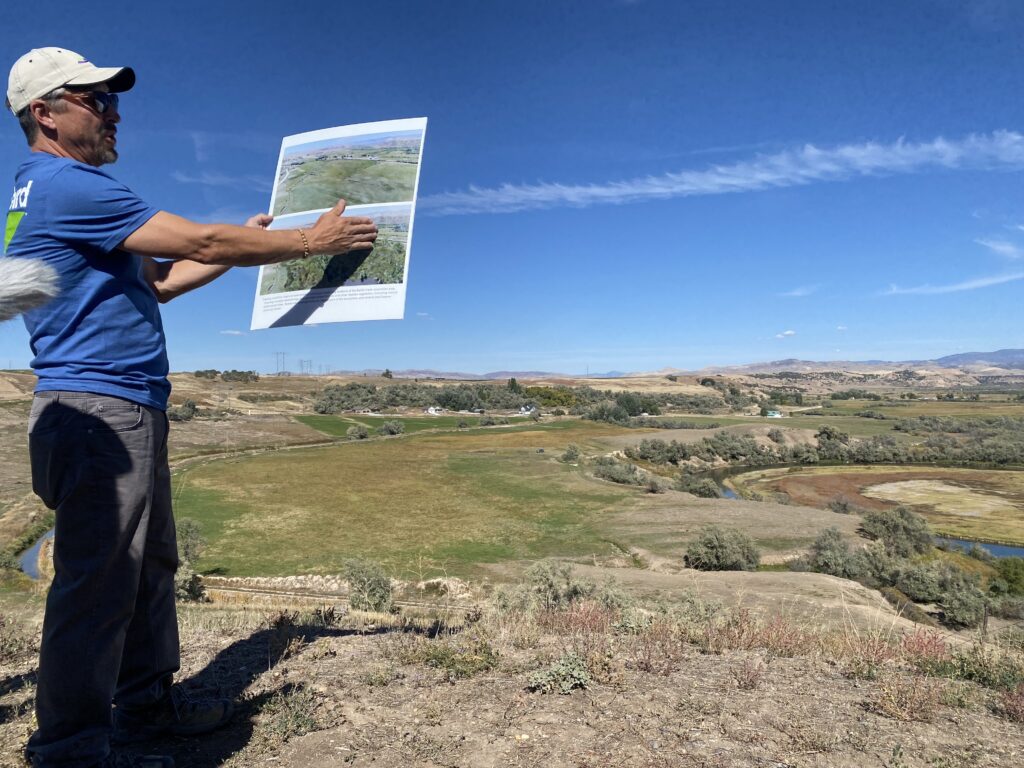
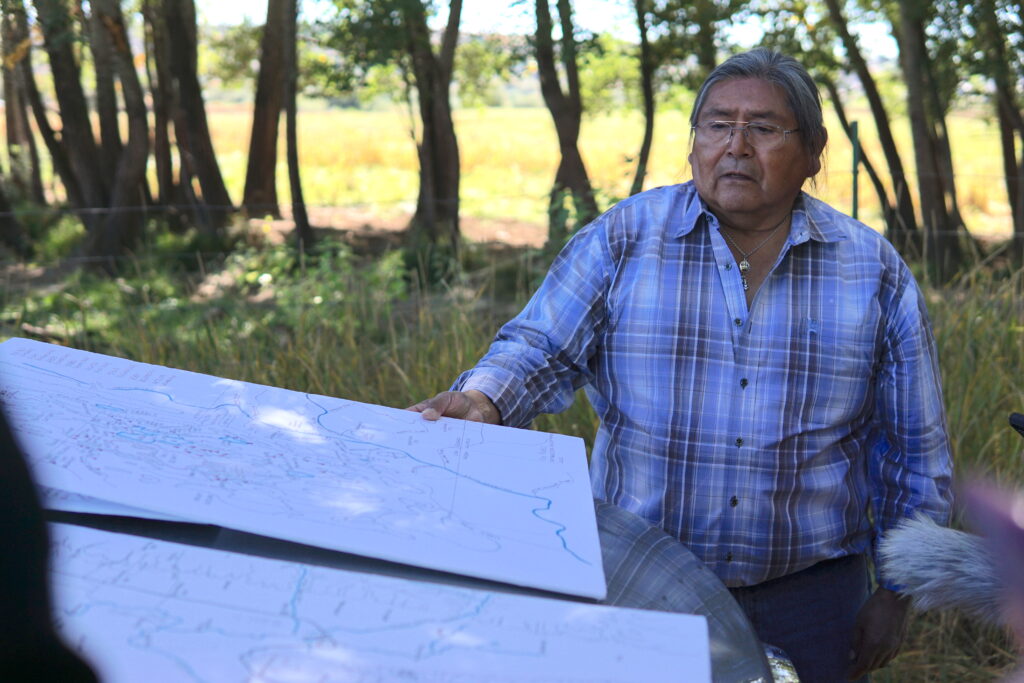
Left: Jaime Campbell talks to the group. Middle: Darren Olsen shows the group an artistic rendering of the visitor center site. Right: Rios Pacheco explains a concept map of the Wuda Ogwa visitor center.
The site, on banks overlooking the Bear River as it slowly curves its way back to the south and toward Utah, was an ideal place for reflection, and for the workshop’s culmination. With each speaker, the week provided repeated evidence that wildlife habitat conservation work is, in fact, people work. The conservation challenges in the Intermountain West are pressing, but there are many incredible people rising up to meet them.
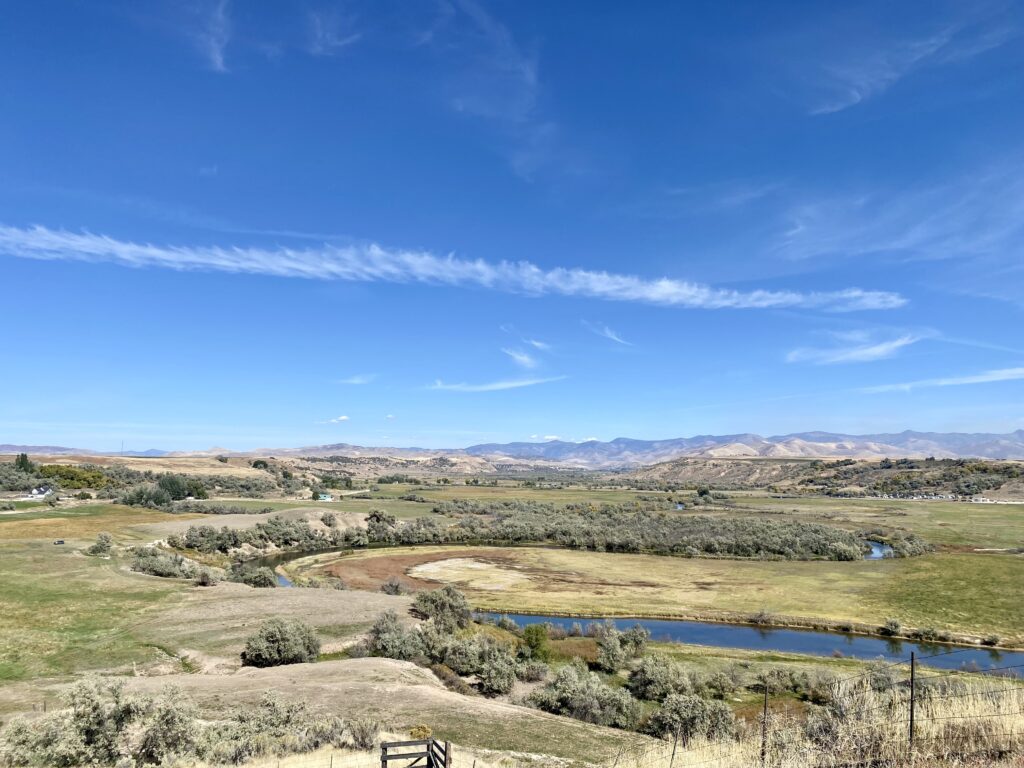
Stories from the Bear
April 17, 2023 – Science News: The Great Salt Lake is shrinking. What can we do to stop it?
December 12, 2022 – Salt Lake Tribune: Flood irrigation uses Great Salt Lake water. It could also save its ecosystem.
December 9, 2022 – Wyoming Public Media: Northwestern Shoshone bring new life to the site of the Bear River Massacre
December 5, 2022 – Salt Lake Tribune: The Great Salt Lake’s most important source of water has a troubled history. But there is hope its future may be better.
November 18, 2022 – On Land Magazine: Don’t throw the baby out with the flood irrigation water
November 18, 2022 – Wyoming Public Media: To save the drying Great Salt Lake, officials must preserve the largest river that feeds it
November 15, 2022 – Salt Lake Tribune: Lots of options are on the table for saving the Great Salt Lake
November 7, 2022 – Salt Lake Tribune: The Great Salt Lake’s ecological collapse has begun with brine flies
November 4, 2022 – Outdoor Life: What Happens to Duck Hunting When the Great Salt Lake Dries Up?
October 18, 2022 – Western Farmer-Stockman: Collaborative spirit makes Wyo. a model, official says
October 13, 2022 – Western Farmer-Stockman: Upending water rights is easier said than done
October 14, 2022 – Outdoor Life: Can Wildlife and Clean Energy Coexist in the West?
October 9, 2022 – Salt Lake Tribune: The Great Salt Lake isn’t just for the birds — it’s part of a water network that ties Utah to the rest of the West and the world
October 3, 2022 – On Land Blog: Water Weekly Post
May 12, 2023 – Ducks Unlimited blog: High and Dry
Copyright 2022 Intermountain West Joint Venture
Words by Emily Downing, photos by Hannah Nikonow and Emily Downing.

